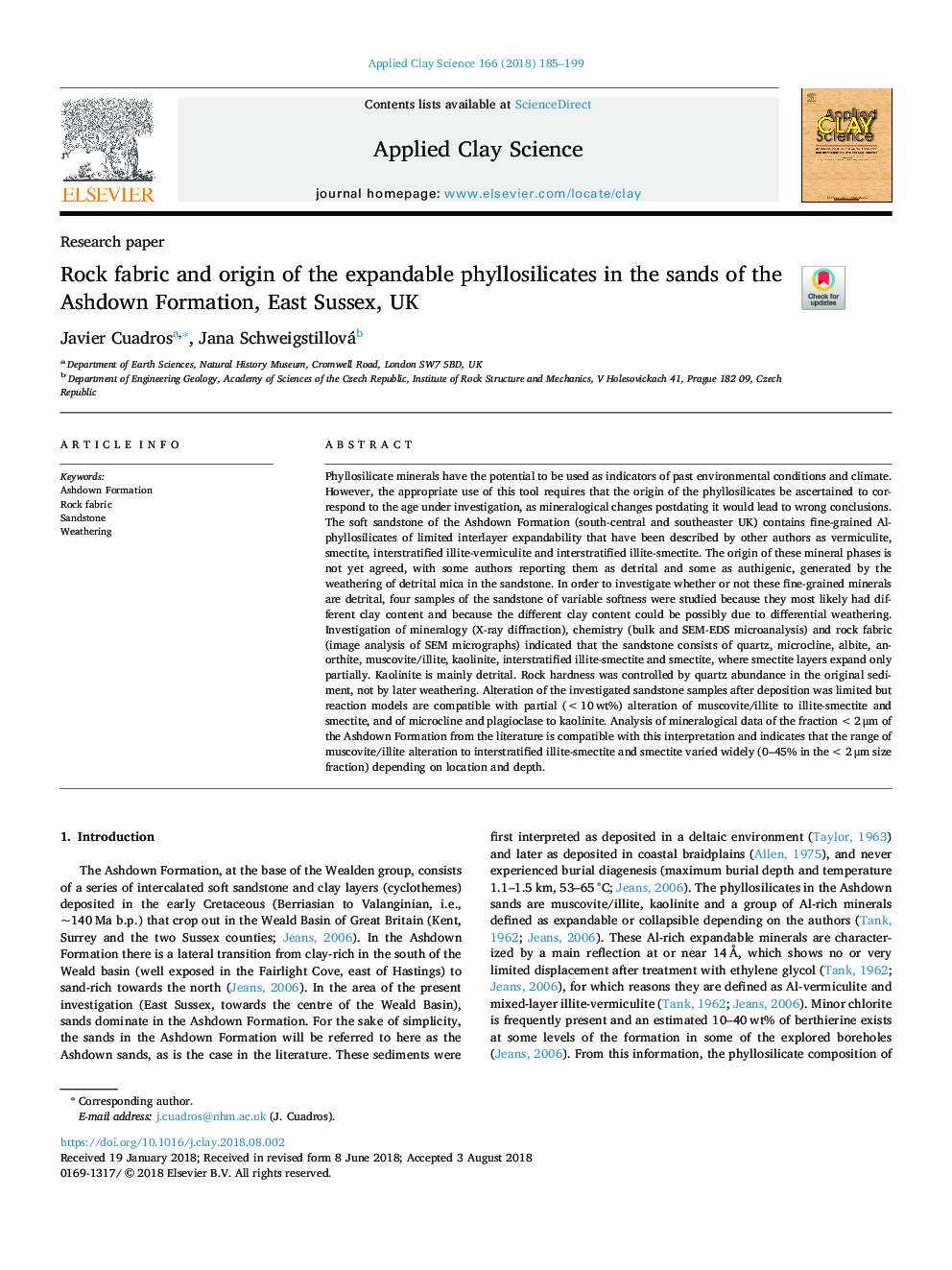| Article ID | Journal | Published Year | Pages | File Type |
|---|---|---|---|---|
| 11026514 | Applied Clay Science | 2018 | 15 Pages |
Abstract
Phyllosilicate minerals have the potential to be used as indicators of past environmental conditions and climate. However, the appropriate use of this tool requires that the origin of the phyllosilicates be ascertained to correspond to the age under investigation, as mineralogical changes postdating it would lead to wrong conclusions. The soft sandstone of the Ashdown Formation (south-central and southeaster UK) contains fine-grained Al-phyllosilicates of limited interlayer expandability that have been described by other authors as vermiculite, smectite, interstratified illite-vermiculite and interstratified illite-smectite. The origin of these mineral phases is not yet agreed, with some authors reporting them as detrital and some as authigenic, generated by the weathering of detrital mica in the sandstone. In order to investigate whether or not these fine-grained minerals are detrital, four samples of the sandstone of variable softness were studied because they most likely had different clay content and because the different clay content could be possibly due to differential weathering. Investigation of mineralogy (X-ray diffraction), chemistry (bulk and SEM-EDS microanalysis) and rock fabric (image analysis of SEM micrographs) indicated that the sandstone consists of quartz, microcline, albite, anorthite, muscovite/illite, kaolinite, interstratified illite-smectite and smectite, where smectite layers expand only partially. Kaolinite is mainly detrital. Rock hardness was controlled by quartz abundance in the original sediment, not by later weathering. Alteration of the investigated sandstone samples after deposition was limited but reaction models are compatible with partial (<10â¯wt%) alteration of muscovite/illite to illite-smectite and smectite, and of microcline and plagioclase to kaolinite. Analysis of mineralogical data of the fraction <2â¯Î¼m of the Ashdown Formation from the literature is compatible with this interpretation and indicates that the range of muscovite/illite alteration to interstratified illite-smectite and smectite varied widely (0-45% in the <2â¯Î¼m size fraction) depending on location and depth.
Keywords
Related Topics
Physical Sciences and Engineering
Earth and Planetary Sciences
Geochemistry and Petrology
Authors
Javier Cuadros, Jana Schweigstillová,
